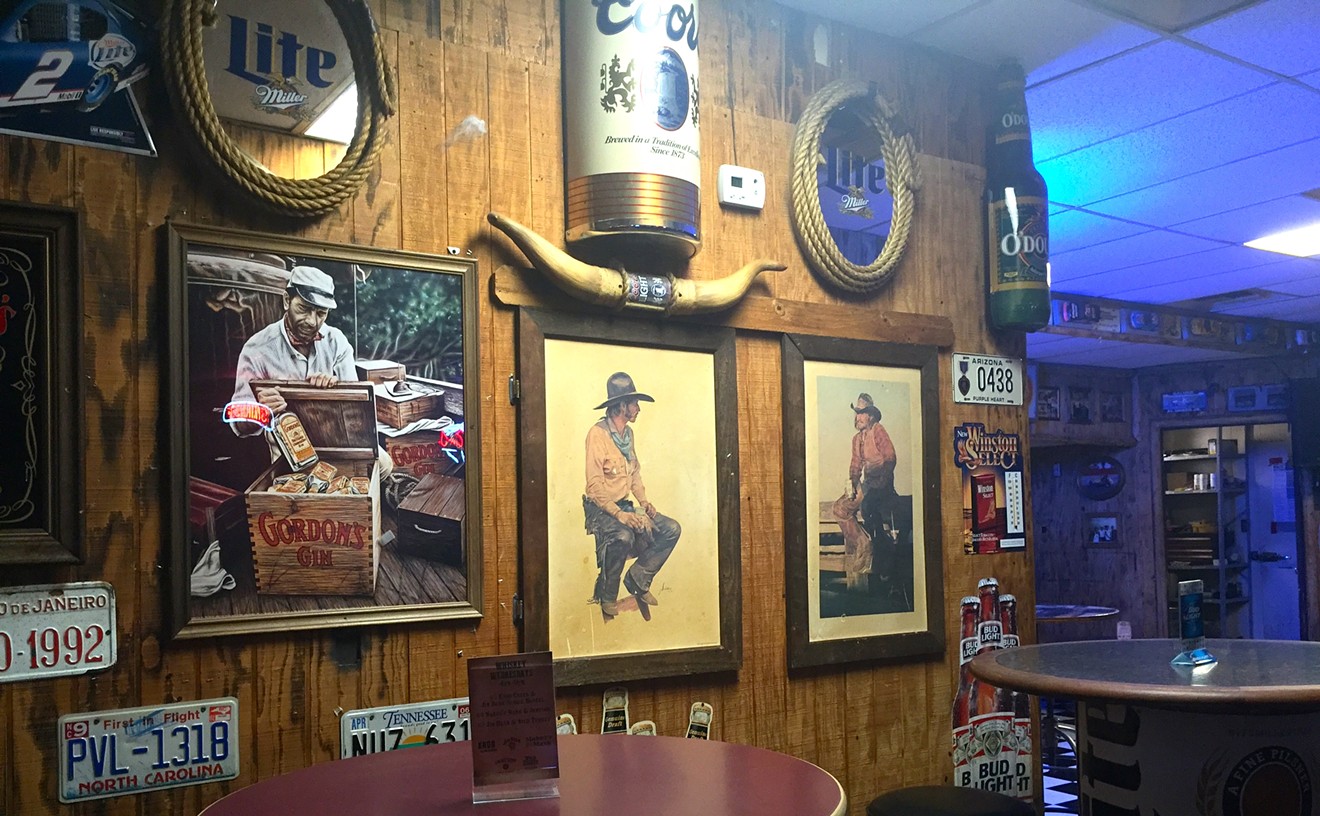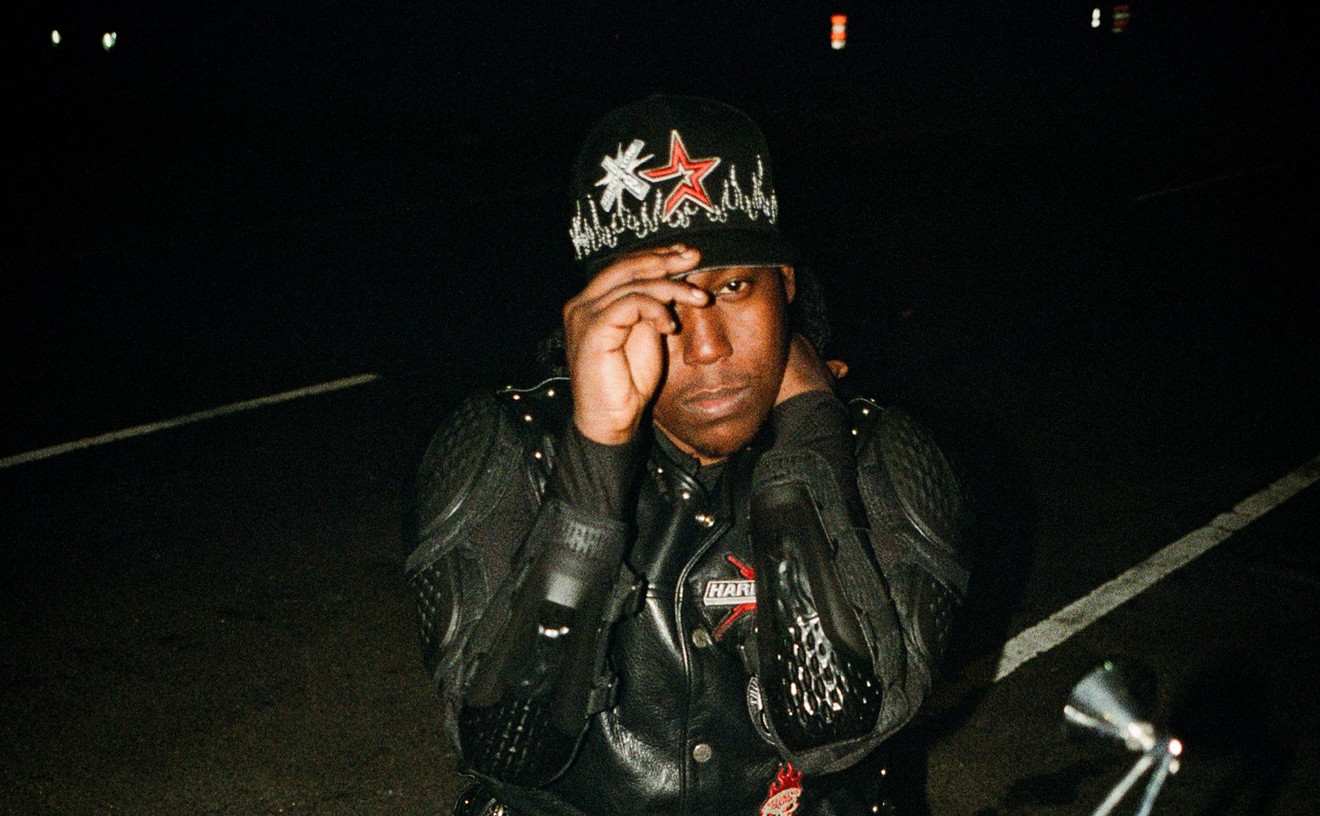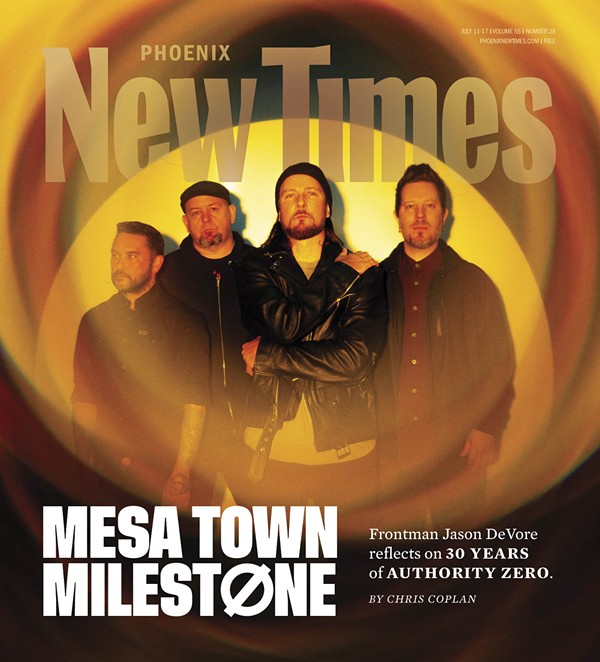"I was in Chicago when I started this [project] during COVID," he says. "I was thinking, 'OK, well, this won't last forever. I'll be back out there playing soon.'"
So, how did Saillant, like many of his musical brethren, actually make it through the deep challenges of this global pandemic? He did the thing that made him the most happy.
"And I just had to think, 'What is my favorite shit out there?'" Saillant says. "I had gotten to play all these styles of music, but I thought my favorite thing is being at a quinceanera, hearing cumbia."
It's a tad hard to form a proper cumbia band when you're all alone in a new city. Fortunately, Saillant had a magical tool at his disposal: the SP-404 sampler. A mainstay of hip-hop, the device allows anyone to sample and remix sounds on the go.
"Ras G was an early pioneer of the SP-404 and the L.A. beat scene," Saillant says. "He had a cool quote that I discovered shortly after he died, and it was something along the lines of, 'What is your soundtrack to your world? Take that, chop it up, and bump that shit.'"
He adds, "So that's what the sampler is used for. But I don't chop up records or old VHS tapes, so why don't I sample myself?"
And in what Saillant calls his "bedroom producer phase," Pijama Piyama released a few tapes and projects, exploring the realms of cumbia, psych rock and other Latin music via this new and novel lens. It was also around this time when another major feature of the music developed: the layered storytelling and conceptual exploration.
"That's been seen in a lot of music," Saillant says. "I mean, Frank Zappa's 'Joe's Garage' does that — unless you listen to the whole thing, you just hear these wacky stories, but you don't maybe get the full picture. The Meridian Brothers have done that ... formed imaginary collectives that they're playing through the lens of. So it doesn't go that deep as those two projects, but each song has a subject."
But the stuff from Pijama Piyama takes it a step further — there's something distinctly whimsical and playful about some of these underlying stories. Chalk it up to yet another thing learned while in the Windy City.
"The lyrics originally were a bit secondary, and they're not as much on the newer material," he says. "But that really plays into just a very imaginary aspect, which I do like to bring into the music. And I would say it's important. It brings a very non-serious, very playful feel. That comes from teaching music classes in Spanish in Chicago. Even though these were Spanish-speaking kids, like 3 to 5 [years old], just like the English students, a lot of them didn't know the nursery rhymes that I knew or grew up on."
So, like all great samplers and bedroom producers, Saillant decided to improvise with his students.
"It came down to us making our own little songs," he says. "And that's what kind of inspired me — I think a lot about how to have some authenticity in this digital age. I look at kids and their imagination and I'm like, 'That's probably the closest thing we have now.' So we'd come up with these little jingles and little stories and that was super fun. I'd never written music in that way. And I was like, 'That's really fun to just use your imagination and run with anything.'"
Eventually, though, COVID came to something resembling an end and Saillant moved back to Phoenix in 2022. He quickly went about building Pijama Piyama from a solo project to a proper six-piece band, including drummer Ben Wise, bassist Brady Saillant and singer/percussionist Pablo Bastidas
But the more things changed, the more they also stayed the same.
"It became [about] still coming from the same place of these chopped and screwed samples and having that almost lo-fi sound that you get from these old samplers," he says. "And then saying, 'How do we reimagine that for a full band while still keeping the essence, the ambiance that was created by using these digital devices versus a live ensemble.'"
On the one hand, having a proper band does make the approach inherently streamlined.
"It does make it easier because for me, being an instrumentalist, there's a bit of laziness behind it," Saillant says. "Like, 'Oh, this part I want to have a stomp to fill it.' And I maybe don't want to do that on a drum pad. So my awesome drummer will add that, and it'll be great."
However, there were nonetheless obstacles to overcome.
"And then there is the challenge of, 'OK, how do we redistribute these parts in a live setting," Saillant says. "And that just comes down to arrangement. I have a background in those instruments, so I will have to give up a little bit of creative freedom there on my end. But [the band] have really done due respect to trying to unravel the nuances that came from the [SP-404] bedroom world and then recreating it in a live setting."
Part of the solution, Saillant explains, has been to step away from the sampler and to write and structure things collectively in the moment.
"I think part of it was, for sure, just coming together and playing more," he says. "And then I started to arrange my music differently since I have an actual set ensemble in mind. So that helped a lot too, but it was cool and helpful for us to figure it out by sheer hours and how to re-create the older material. And then once we have that, I was like, 'Well, now I can write within that sort of structure.'"
However, there's still a foundation that the sampler and its corresponding "philosophy" still provide for Saillant.
"I still more or less do the same process of making every little part in detail at home and then re-creating it for a live setting," he says. "But I definitely embrace the limitations now."
He adds, "Like I said earlier, it's part of the passion of just sitting down in that workflow and space. So I have thought about that. It does create more work. But at the same time, it also doesn't because we're all busy people. So for me to send something and say, 'Hey, this is totally done. Here it is. I can write out your part or not, whatever we need to do to learn this material.'"
This involved, multi-stop process has worked, especially when you consider something like the recently released "Pijama Piyama y Los Niños De Rana" album. Equally whimsical and funky, the LP captures the magic and the earnestness of what Pijama Piyama are trying to do. The stories are there to explore as you see fit, but that unwavering passion and understated fire are apparent in every note.
However, Pijama Piyama crafts cumbia music, and that adds a whole other dimension to their efforts.
"It's definitely coming from a traditional backbeat," Saillant says. "The rhythms are very cyclical. And I think having that cyclic nature really allows for a lot of creative liberties to be taken. I don't really manipulate a whole lot. That part is really trying to stay true to the roots."
He's not alone in melding this deeply traditional music with electronic influences and modern novelties; he mentions groups in Bogota, Colombia, and Mexico that are doing similar things.
At the same time, though, he and the rest of the band are very much bucking up against certain traditions and beliefs about what defines Latin music.
"The more traditional [cumbia] audience may not be as interested," Saillant says. "And I've even experienced that where we play and people want to hear just pure cumbia. And that's expected. But there are still people, within the Latino community and outside, who want something different. I would say it does tap into the large diaspora of Latino music and the Latino community."
He adds, "People hear Latin night and they expect a certain thing. Even the news media, when they try to cover Latino news and stuff, it's very much in a box, but I don't think that truly represents the wider spectrum. So I think there are a lot of people who really appreciate that and say, 'Yeah, this is stuff I want to hear. That stuff that's a little more psyched-out and experimental."
But despite any pushback they may have gotten, Pijama Piyama continue to lean into what they do best.
"[Cumbia is] such an involved music that we have thought about having some more theatrics," Saillant says. "But at the end of the day for the live performances, people want to dance, and they're not as focused on those elements with the storytelling and the imaginary characters. But I think definitely part of that translates when the music gets very, very silly and naturally animated, because we're really moving up there."
Ultimately, though, any success, or even traction in the larger community, was earned by staying true to something elemental in Saillant's life and experiences.
"Part of it just comes from making the things that I just want to hear in my world around me," he says. "And I'm certainly not the only person to think the same thing. So I think there's some sort of collectiveness in that — like, 'I would like to hear this in my city.'"
Of course, just what defines Pijama Piyama continues to change pretty rapidly. After moving from solo project to full band, and working out a way to balance the various approaches of making music, the collective are at a crossroads of sorts.
"At first it was that I had all this material already," Saillant says. "Now that we're past getting through it all, the conversation has opened to, 'OK, well, now that we know each other well, if anybody has ideas, we could do the same process.'"
So the band will continue to write and work on new projects, and perhaps tour some more across spring and summer 2024. The new path may be as uncertain as the one that came before it, but that's where most of the fun and adventure comes from anyway.
"The most recent album was really just us documenting and showcasing the whole process of turning this into a full ensemble," Saillant says. "So moving forward, we're going to be recording more smaller concept projects that tie into the specific styles we're playing around with. Specifically, we're going to be working on a more salsa-driven project. You've got to just sample your own life."











